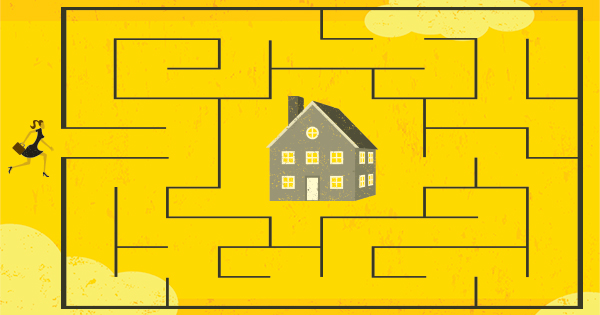
The National Association of Realtors recently released a consumer survey where, although only half of surveyed households believed the economy is currently improving, nearly all young renters who are 34 years of age or younger expressed a desire to eventually buy a home (94 percent), and a convincing majorityamong all age groups (77 percent) still view homeownership as part of their American Dream. Additionally, a newly-introduced index tracking the financial outlook of households found that compared to earlier this year, an increasing share believes their personal financial situation will improve in the months ahead.
Despite uncertainty about the economy's current performance, at least 84 percent of all households within all surveyed age groups and education levels believe owning a home is a good financial decision. When asked if they believe this strongly or moderately, 76 percent who believe it's a good decision feel strongly about it.
Additionally, at least 85 percent of surveyed households in each age category as well as across all education levels believe homeownership is part of their personal American Dream. The most appealing aspects of homeownership cited by those with this feeling include a place to raise a family (36 percent), owning their own place (26 percent) and a nest egg for retirement (14 percent).
So what does it take to own your own home? A recent study by Fannie Mae revealed that many consumers are either unsure or misinformed regarding the minimum requirements necessary to obtain a mortgage. The following is a breakdown of three pertinent challenges.
Down Payment
Perceptions
Many renters have mentioned that the lack of an adequate down payment is preventing them from moving forward with the purchase of a home. According to the Fannie Mae report:
- 40% of all renters don’t know what down payment is required
- 15% think you need at least 20% down
- An additional 4% think you need at least 10% down
The Reality
There are programs offered by Fannie Mae, Freddie Mac, and FHA that require as little as 3-3.5% down. VA and USDA loans offer 0% down programs. According to theNational Association of Realtors, the typical down payment for a first time buyer is just 6%.
Credit Score
Perceptions
Many renters have mentioned that the lack of an adequate credit score is preventing them from moving forward with the purchase of a home. According to the Fannie Maereport:
- 54% of all renters don’t know what credit score is required
- 5% think you need at least a 740 credit score
The Reality
Many mortgages are granted to purchasers with a credit score of less than 700. According to Ellie Mae, the average credit score on a closed FHA purchase is 687 and the average credit score on all loans is 722.
Back End Debt-to-Income Ratio (DTI)
Perceptions
Many renters have mentioned that they carry too much debt which is preventing them from moving forward with the purchase of a home. According to the Fannie Mae report:
- 59% of all renters don’t know what DTI is acceptable
- 25% think you need at under 25%
- 7% think you need under 39%
The Reality
Lenders like to see a back-end ratio that does not exceed 36%. Fannie Mae’s maximum total DTI ratio is 36% of the borrower’s stable monthly income. The maximum can be exceeded up to 45% based on credit score and other requirements.
Bottom Line
Don't let a lack of knowledge or misinformation keep your family from buying a home this year. Meet with a local real estate professional who can evaluate your ability to buy now and help you achieve your dreams. And, as always, if I can answer any questions or help in some way, please don't hesitate to ask. I'm here to help!
 Facebook
Facebook
 X
X
 Pinterest
Pinterest
 Copy Link
Copy Link